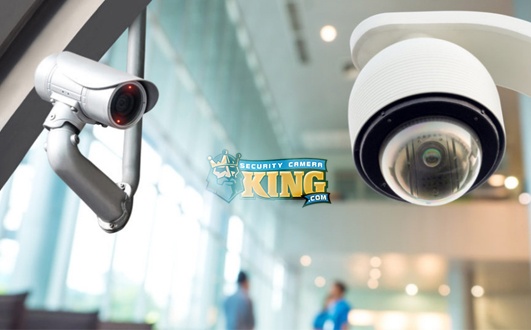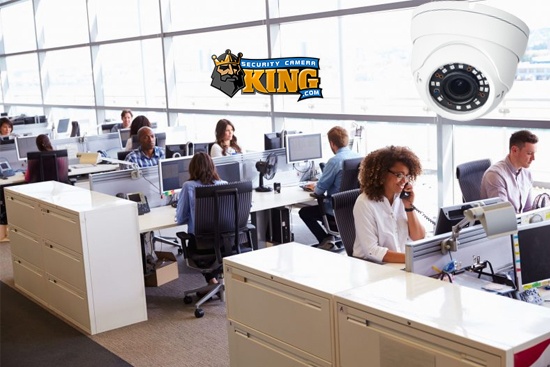Security cameras are made and used on a daily bases for a number of reasons. They can be used anywhere from gas stations to military personnel vehicles. Specifically, security cameras are used to view or record any person, place, or thing without being there in person. There are many different types and styles of cameras and they are all used in different settings. Learning about the different types of security cameras available can give you the upper hand when needed for a specific task or location. Deciding which is the best security camera for you will depend on your situation.
Types of Security Cameras
There are many types of security cameras in the security world today. They all fall into a few main categories including Analog, Network IP, and HD-CVI. Even though it might not sound like much, each side offers many different options and capabilities which can affect camera quality and your wallet. There are advantages and disadvantages to each type and overall get the job done.
Styles of Cameras
Cameras come in many different shapes and sizes and, depending on where you place them, can give you better understanding of what you will need.
Box Cameras
Box cameras are very customizable and offer many different lenses sizes. You can either have them mounted as is, or you can put them in a case called a box, hence the name. Box cameras are also capable of being mounted in extreme weather because some of their boxes have heaters and blowers built in. Most box cameras are dual voltage and have the capability to support alarms and strobes connected. Downsides are they are bulky and require more experience for setup and installation.
Bullet Cameras
Bullets are also a great choice because they have a greater viewing angle then most other cameras. Bullets can also have larger range of different lenses built in so you can zoom in close on a shot or have a wider viewing angle. The downside is they are not vandal proof and very noticeable.
Dome Cameras
The most common camera used is the dome. Domes can be used in many different locations and can take a punch or two. Domes have wide viewing angles for greater versatility. They are also more discreet, when it comes to hiding your cameras, then when it comes to a bullet. They also can take a couple of hits because of their robust structure.
PTZ Cameras
PTZ’s can give you more coverage than a conventional pre-positioned camera. P-T-Z (Pan-Tilt-Zoom) cameras are made for you to control the camera so you can see what’s happening even if it moves out of your typical viewing area. Some PTZ’s can also track objects or people so you don’t have to move it yourself. Downside is that they can be pricy and bulky.
Hidden Cameras
Hidden cameras are made for you to know where they are but no other person will. They can be just about anything: clocks, smoke alarms, phones, mirrors, and many others. Disadvantages are they typically can’t see or record very well at night.
License Plate Cameras
License plate cameras are built to capture a license plate at high speeds. These cameras are used for highways, entry gates, business, parking garages, and more. They offer advanced technologies that allow you to focus on the license plate in light or dark conditions.
Thermal Cameras
Thermal cameras are designed to allow you to see heat signatures in any light setting. This can help you distinguish differences between important and non-important things during motion detection. For example, branches blowing in the wind and a person walking. This may not give you the best image but it can trigger a separate camera to record the situation.
What is IR?
There are also other features that security cameras can have. Cameras can be indoor or outdoor depending on the camera. Some Cameras come with IR (Infrared Technology) that allows them to see at night. IR is a light that is invisible to us but is like a flood light for a camera. IR is usually built onto the cameras themselves, but can also be placed separately for cameras that have the capability to view the light. The style of camera can give you your best view and placement for anywhere they need to be.

Analog Cameras
Analog cameras have been used for many years and have done its job very well. The way that it works is by the type of signal it sends to its receiving end. It sends an analog picture of what it views and it can either record by tape or by digitally converting it to record on a hard drive. The old way would be the tape, but now we have either a computer with a card that receives the signal and converts it to be stored on a hard drive or a standalone unit called a DVR that does the same thing, just without using your personal computer. DVRs are recommended because they can be hidden and require half the power (electrical and processor). Over the years, analog cameras have improved profusely by increasing frame rates and quality of resolution. The latest technology for analog cameras is called HD-CVI. This is an analog technology that allows you to record 720p-1080p resolution.
Network IP Cameras
Network IP Cameras are starting to become more affordable and practical for business and homes. Network IP cameras are cameras that function all on their own and don’t require any standalone unit to view and in some cases record. The way they work is through your new or existing network and is given a IP address (Internet Protocol) which allows it to be accessed through your network for viewing or recording purposes. Network IP cameras can be controlled also through a web based program for initial set-up and to adjust and control the camera like a PTZ. IP cameras are also usually in High Definition. They can record as high as 10MP (Megapixels) in resolution but average cameras record at 1080p. Megapixel is one million pixels in a specific image, so 2MP is similar to 1080p. The downside to using Network IP cameras is they run through your network to be viewed and/or recorded. This is a problem if you have a lot of cameras or if your cameras are recording in 1080p or above. Networks can only handle a set amount of send and receive data before bogging down. This drag increases when you are recording and viewing simultaneously inside your network and out. There are ways to overcome this problem by either getting a managed switch or making separate networks for specific amounts of cameras.



















